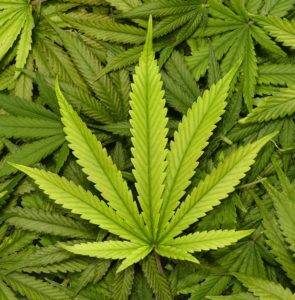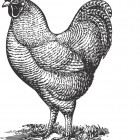Conversations
Cannabis Legalization: A green era begins
March, 2018
One of the biggest news stories coming out of Canada this year will certainly be cannabis legalization. While its use for medical purposes has been legal here since 2001, in recent years calls for full legalization have gathered steam. This culminated in the 2015 federal election, when Liberal leader Justin Trudeau promised to legalize the once frowned-upon drug. With cannabis set to become legal this summer, the provinces have been tasked with coming up with their own frameworks and regulations for its distribution and sale. Here’s what you need to know about legal pot, both nationwide and in Alberta.
What are the health effects of cannabis use?
Health Canada’s website describes cannabis as having “both potential therapeutic uses… and potential health risks.” As Canadians are already aware, it is sometimes prescribed for ailments like chronic pain, loss of appetite for HIV patients, and nausea for patients undergoing chemotherapy. The chemical in cannabis that causes the body’s response is called tetrahydrocannabinol, or THC for short. Generally, THC has a relaxing and numbing effect on users, hence its medical uses. In fact, it is the active ingredient in a number of prescription painkillers on the market now.

However, there can be negative consequences to cannabis use. For some users, the short-term effects might include confusion and fatigue, as well as overall impairment, including a loss of coordination and a reduced ability to react, pay attention and judge distances. That’s why it’s not a good idea to drive or operate machinery under the influence. Anxiety is also a possible short-term outcome, and in some people, psychotic episodes can even occur. As for long-term effects, there is a popular misconception that cannabis is non-addictive, but dependency can result with regular and heavy use. Youth are particularly at risk of this, as their brains are still developing. Other possible long-term effects include decreased memory and problem-solving skills, as well as hyperactive behaviour.
What are the basic regulations, and how will they be enforced?
The Cannabis Act will allow Canadian adults to buy and possess legal cannabis; it will also restrict illegal marijuana and youth access to all cannabis. Adults may possess and share up to 30 grams of cannabis and also make cannabis products at home. Furthermore, they will be allowed to grow up to four plants at home from licensed seeds or seedlings (although some rental and condo agreements may forbid this). The Act also aims to educate the public on the risks of cannabis use and to improve quality control by licensing suppliers.
Amendments to the criminal code will punish those who break these regulations. Giving or selling cannabis to a minor, or using a minor to commit a cannabis-related crime, can result in up to 14 years in jail. Similar maximum penalties face those who import, illegally distribute or sell cannabis in large amounts, as well as anyone caught producing cannabis over the legal limit. Possession over the limit, meanwhile, may be punished by up to five years’ jail time for large amounts.
What about drug-impaired driving?
The possibility of stoned drivers on the roads is a concern that’s been raised by many Canadians. According to statistics released by the federal government in 2015, impaired driving was down 65% overall from 1986. Of the more than 72,000 offences in 2015, fewer than 2,800 involved drugs. However, incidents involving drug-impaired driving have, relatively speaking, been increasing lately. In 2009, the year that data was first collected, drug-impaired driving offences accounted for 2% of all impaired-driving incidents. In 2015, that had risen to 4%. It should be noted, though, that part of this rise is due to law enforcement becoming better able to spot drug-impaired drivers.
As a result, the federal government is taking a number of measures to improve detection and enforcement when it comes to drug-impaired driving. A pilot project that ran from December 2016 to March 2017 tested various roadside drug-detection devices. It found that saliva testing worked well at spotting the presence of several drugs, including cannabis. New impaired-driving legislation will allow police to demand saliva or breath tests from any driver they stop; they will also be able to demand blood samples if they suspect a driver is drug-impaired. Additionally, the legislation will increase minimum fines and maximum sentences.
The proposed limit for cannabis—or more specifically, THC—will be 2 nanograms (ng) per 1 ml of blood. Driving over this limit will be punishable with at least a fine. Driving with more than 5 ng of THC per 1 ml of blood, meanwhile, could result in jail time. The amount of cannabis a person would have to smoke to reach this limit can vary greatly, but for many it could be as little as a few puffs.
Who will provide oversight?
The federal government will have control over most matters related to cannabis legalization. But a number of important responsibilities have been delegated to the provinces and even to municipalities. The federal and provincial governments will work together on issues like education and taxation, while the provinces will bear sole responsibility for distribution and wholesaling, workplace safety and retail. Provinces will also have the right to strengthen legislation in certain areas under federal jurisdiction—namely, possession limits, advertising and packaging, legal age and home cultivation. Municipalities, too, will share a number of duties with their provincial and federal counterparts, but will have full responsibility over land use and zoning for retail locations.
Where and how will cannabis be sold in Alberta?
In our part of the country, the Alberta Gaming and Liquor Commission (AGLC) will oversee cannabis retail and distribution, and will determine which retailers can sell cannabis in Alberta through a licensing system. Licensed retailers will have to purchase cannabis from the AGLC (which in turn, buys from Health Canada-licensed suppliers, all of whom are Canada-based) and will not be allowed to sell anything but cannabis and approved accessories. In other words, cannabis sellers won’t also be stocking up on alcohol or cigarettes (or even munchies). The AGLC will keep the minimum age in Alberta in line with the drinking age of 18. However, anyone who appears to be under the age of 25 must show ID, and minors won’t be allowed to enter stores, even with an adult. Additionally, stores will have to be at least 100 metres from schools and provincial health care facilities.
Besides these brick-and-mortar outlets, which could be restricted by municipalities through zoning bylaws, the AGLC also plans to launch an online store to coincide with legalization. An age-verification system will be in place, and the usual regulations will apply. Note that the AGLC site will be the only legal online retailer in Alberta.
What is the process for becoming a licensed retailer in Alberta?
Getting a retail license comes with plenty of red tape, as might be expected. Applicants can expect extensive background checks, not only on themselves but also on associates, company shareholders and “key employees” who influence company operations. The purpose, of course, is to prevent criminal interests from entering the market in any way. Applicants must also pay a variety of fees, including $700 annually for the licence, and get the approval of the municipality in which they plan to operate. Store security will be a serious matter, as retailers will have to provide, among other things, alarm and video surveillance systems along with secure product displays and storage areas.
There’ll be training, too. Similar to ProServe certification for liquor service professionals, employees at cannabis retailers will have to complete SellSafe training to become what the AGLC is calling a Qualified Cannabis Worker. The program starts at the beginning of May and, according to the AGLC website, will “help licensed retail cannabis store staff understand how to sell legal cannabis responsibly.” Qualified Cannabis Workers will also be required to provide a criminal record check to be recognized by the AGLC.
The AGLC started taking applications on March 6. There is no cap on how many licenses it plans to give out. Although an individual can own more than one store, nobody can hold more than 15% of the licenses in the province at any time.

Will people be allowed to smoke in public?
Yes and no. In fact, it’ll be similar to the restrictions currently placed on tobacco use. People will be allowed to smoke at home, unless home is a non-smoking property, like an apartment building. They will also be free to smoke outdoors—but with many exceptions. Cannabis smoking and vaping will be prohibited on hospital and school grounds and at childcare facilities. It will also be forbidden within a certain distance from public places where kids can be expected: zoos, skate and bike parks, playgrounds, sports fields, and outdoor theatres and pools. Just like with alcohol, people won’t be able to use in motor vehicles—unless the vehicle is being used temporarily as a residence. Finally, municipalities will also have the right to impose additional restrictions.
What will the price be, and who will set it?
As with alcohol, the AGLC will be handling distribution in Alberta, and so it will set the wholesale price while stores determine their own retail prices. The AGLC will further decide the retail prices for the online store it plans to operate. At the time of writing, these prices were not yet available. However, speculation across the country is that the price will be around $10 a gram, similar to its current street value, in order to prevent a black market from starting up.
How will it be taxed, and what are the expected revenues?
This past December, the federal government reached an agreement with the provinces and territories to share the revenue from a cannabis excise tax. Ottawa has set a rate of 10%, or a dollar a gram (if the price is indeed $10 a gram). Each province and territory still has the right to impose sales taxes, likely driving the price up in a few provinces. And, of course, the GST will be applied. The deal will see tax revenue split 75/25 in favour of the provinces and territories, with the feds’ share capped at $100 million a year. That’s based on federal projections of $400 million a year in revenues, although other estimates have been much higher. Nonetheless, as per the current agreement, anything over $400 million will go to the provinces.
How do Alberta’s plans compare with other provinces?

Like Alberta, most provinces will be selling and overseeing pot sales through their liquor commissions. British Columbia and Ontario will allow a mix of public and private stores, while all of Quebec’s stores will be public. Nova Scotia’s liquor commission plans to sell both alcohol and cannabis in its stores. A number of provinces, including Nova Scotia, have set possession and cultivation limits similar to Alberta’s: 30 grams per person and four plants per household. In Quebec and BC, on the other hand, it will be illegal to cultivate pot at home. A majority of the provinces have set a legal age of 19—even Manitoba, where the drinking age is 18. Finally, while Alberta and Quebec will allow cannabis use anywhere that tobacco is allowed, Ontario and a few other provinces will restrict it to private residences.
South of the Border
In the US as of January 2018, non-medical use of cannabis has been decriminalized in 13 states and legalized in nine states (plus the District of Columbia). In the legal states, the minimum age is 21, and personal cultivation is allowed in all but Washington.
Cannabis prohibition in Canada
In 1923, cannabis was added as a prohibited drug by the federal government. However, it took a few decades before Canadian law enforcement paid serious attention. Between 1930 and 1945, there were 25 convictions for cannabis; in 1972, there were 12,000.
- age
- cannabis
- drug
- drugs
- illegal
- legal
- marijuana
- medical
- medicinal
- medicine
- sales
- store
- tax
- taxes
- weed













